10 Ways to Celebrate Easter in the Nordic Style: Food, Traditions and Decorations
•Posted on March 21 2022

Spring is here! This is a time for new beginnings, renewal, longer days and we all - animals, plants and people – are starting to wake up from "winter hibernation"! Spring is also a time of celebration for different faiths, including those who celebrate Easter.
In the old times, particularly in the Northern Hemisphere, people planned their lives around the patterns of nature. The seasonal changes in nature and animals are believed to have also played a role in how some of the Easter decorations have come about, such as Easter eggs, bunnies and other decorations.
Easter in Scandinavia and Nordic Countries
Before we reveal some of our favorite Nordic Easter traditions, recipes and decorations, here are some quick facts about how Easter is celebrated in Nordic and Scandinavian countries. For the most part, it is celebrated in perfect harmony combining religious and secular traditions. It is also a time to slow down, take a break and enjoy the Spring. Most shops, banks and offices close for the holidays (up to 5 days).
FINLAND
In Finland, Easter ("pääsiäinen" in Finnish) is celebrated with a mix of religious and local customary traditions. One of the popular traditions is for young children to dress up as "Easter witches". Children wear colorful clothing and paint freckles on their faces. Similar to Halloween, children then visit neighbors and friends going door to door (on Palm Sunday), carrying colorfully decorated willow twigs to wave evil spirits away in return for treats, such as chocolate eggs. At the doors the kids recite a traditional rhyme: "virvon, varvon, tuoreeks terveeks, tulevaks vuodeks, vitsa sulle, palkka mulle" which roughly (and literally) translates to "I wave a twig for a fresh and healthy year ahead; a twig for you, a treat for me"!
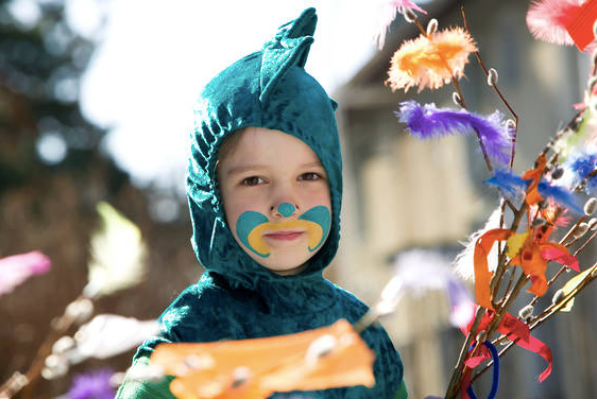
Finnish Easter "witch" and brightly decorated willow branches. Photo credit: image bank Helsinki
In general, Easter in Finland follows religious traditions of the Evangelical Lutheran Church and it is a quiet time to reflect, slow down and enjoy it with family and friends indoors and outdoors.
The traditional Easter Sunday menu in Finland consists of roasted lamb seasoned with herbs and garlic, and vegetable side dishes, such as roasted asparagus, scalloped potatoes and salads. Mämmi,a pudding made of malt and rye flour is served with fresh cream and sugar. Warning: Mämmi, is not for everyone (!) and is bit of an "acquired taste"! Nowadays the Easter food includes traditional dishes with more vegan and vegetarian friendly options and flavors influenced by global cuisine.
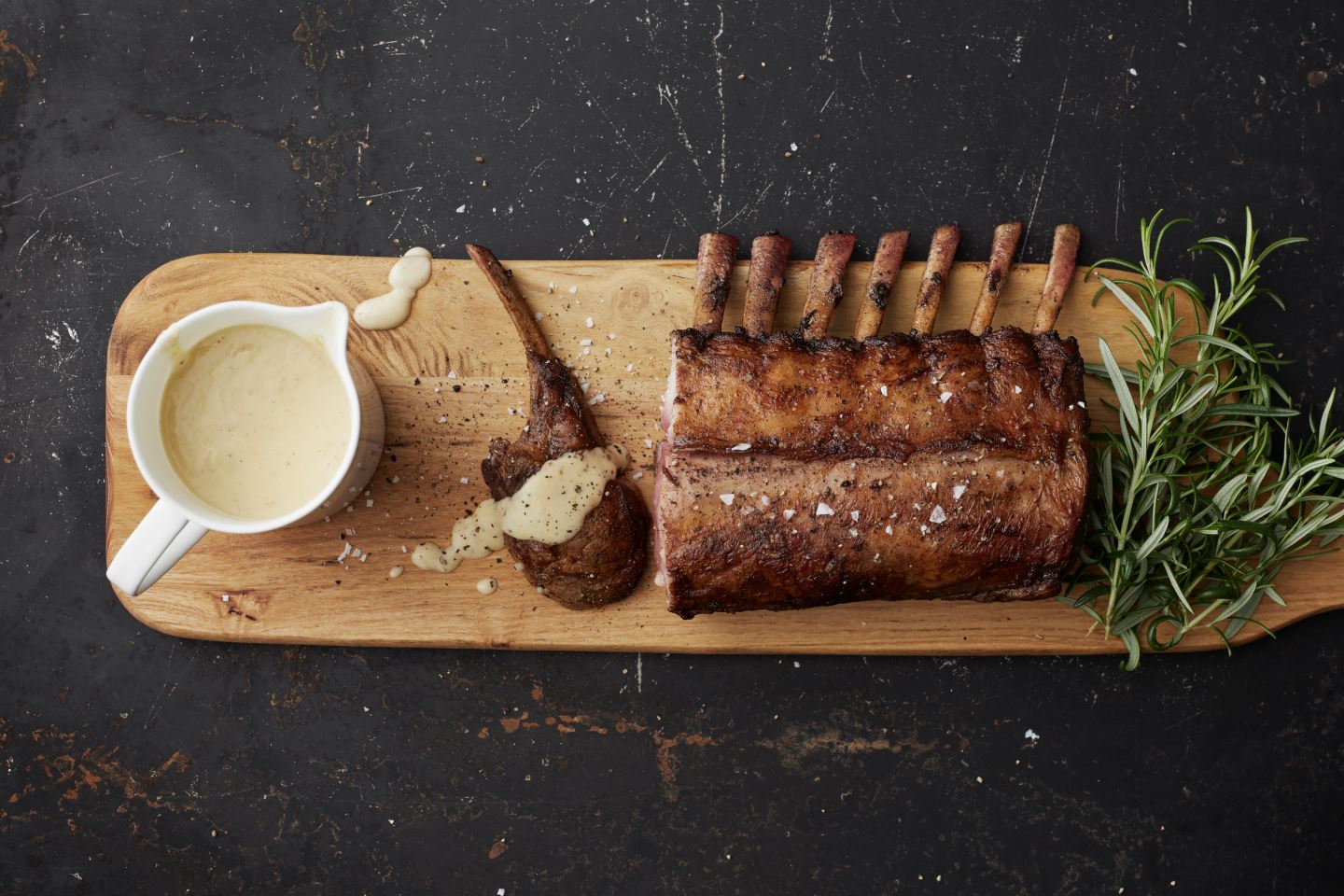 Finnish style Easter lamb (photo credit: Valio)
Finnish style Easter lamb (photo credit: Valio)
SWEDEN
Påsk (Easter in Swedish) has become a secular holiday in Sweden and most people celebrate it at home (or at their holiday cottages) with their families and relatives. It is an opportunity to take a break and celebrate the long holiday weekend of the spring with family and friends.
Similarly to Finland, children dress up as colorful Easter witches and go from house to house to get treats but instead of waving the evil spirits away with decorated willow twigs they present their paintings and drawings in hope of getting sweets!

Little "Easter witches" going door to door in Sweden (photo credit: image bank Sweden)
DENMARK
As in many Nordic countries, Danes look forward to Easter as it signals the end of a long dark winter and brings with it the promise of spring. The arrival of spring is celebrated along with the traditions of the Easter holiday. Traditionally, Danes celebrate Maundy Thursday, Good Friday, Easter Sunday and Monday. These are all national holidays. Many Danes will also take the entire week prior to Easter off (no wonder they are among the happiest people on Earth).
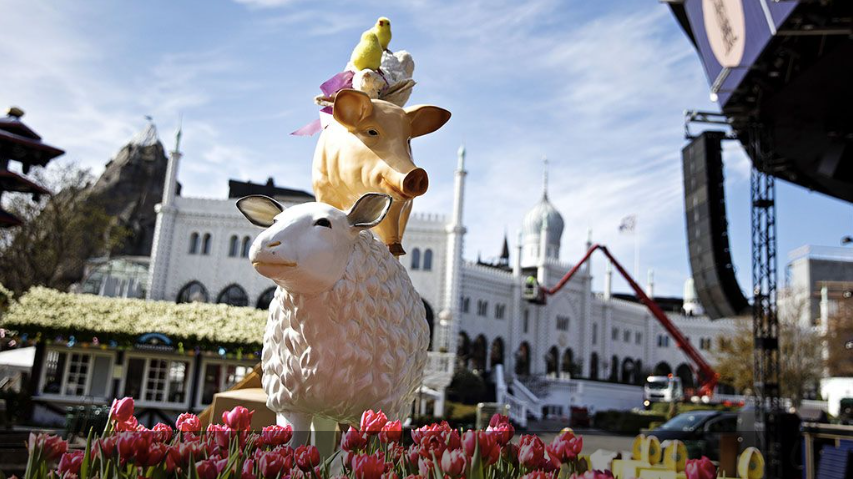 Spring time in Copenhagen. Photo: Visit Denmark
Spring time in Copenhagen. Photo: Visit Denmark
You will find many Danish families heading to the countryside during these holidays to their summerhouses. It is common for Danes to have a “country” home, considered a very private place and usually “by invitation” only.
Although Denmark is a Christian country and has a state church called the Evangelical Lutheran Church of Denmark, it is not common to find people in church during Easter and there are normally not any grandiose parades or other major celebrations during this time. It is typically a quiet time for families to get together and enjoy good food, spring weather and reconnecting with nature after the winter season.
 Danish smørrebrød! Photo: Visit Denmark
Danish smørrebrød! Photo: Visit Denmark
One of the only absolutes in Danish Easter is “Påskefrokost”. This is a feast that will last most of the day and is a mixture of lunch and dinner. It boasts a plentiful table with delicacies such as lamb, hard boiled eggs, fish such as herring or salmon and of course, beer and “snaps.” Snaps is a small “shot” of alcohol, normally “aquavit” that is taken with the food and drink and used as a toast, yelling “skål!” This accompanies a heavier, more flavorful beer brewed especially for the Easter holiday.
ICELAND
The Easter celebration in Iceland occurs over a 5-day period with Thursday and Friday being a bank holiday and with many people using the opportunity to travel, in Iceland or internationally. As with most Icelandic holidays, it’s a time spent with family and friends. Despite the fact that 70% of Icelanders belong to the Lutheran Church of Iceland, only about 45% consider themselves religious. Whichever their beliefs, Easter (Páskadagur) is a National holiday in Iceland and Good Friday is, by Icelandic law, a no-party day, just like in Finland. Bars and clubs close at midnight on Maundy Thursday (Skírdagur) and open after midnight on Good Friday (Föstudagurinn Langi). This also includes recreational gatherings in public places like lotteries and card games. Icelanders gather each year to protest this law and play Bingo. No one has ever been arrested for doing so and this has become a national pastime in Reykjavik.

Chocolatier Hafliði Ragnarsson creates deluxe Easter eggs. Phoro: Eggert Jóhannesson
As in most of the Nordic countries (and just about everywhere else) eggs are a central part of Easter. Easter eggs are a fairly recent addition to Icelandic Easter, arriving around the beginning of the 20th century. Popularity has grown significantly since then with more than 100 tons of chocolate eggs sold each year! Icelandic Easter eggs are often stuffed full of more candy and prizes, sometimes even a proverb, like in Chinese Fortune Cookies! Other fillings include chocolate covered caramel balls, toffees, licorice, boiled sweets and jellybeans. Eggs also come in many different sizes. One specialty is liquorice-chocolate eggs that are becoming more popular every year.

Lovi Finland 3D designed DIY rabbits in natural color
Celebrating Easter with a bountiful table is also a tradition in Iceland. "Easter Leg" is a typical dinner on Easter Sunday that features a roasted leg of lamb, sugar-glazed potatoes and gravy. Lamb has been a staple in Iceland for over 1000 years, and will be found on most tables there on Easter Sunday! The Monday after Easter (Annar í páskum) finds most Icelanders finish off the leftover food!
NORWAY
Easter ("påske") in Norway equals long holidays and an opportunity to relax and rejuvenate. Many people also spend their Easter on skis and enjoy getting a tan ("påskesol") while hitting the ski slopes! Apres-ski in the mountains is spent in "hytter" (cabins) drinking hot chocolate and reading crime novels ("påskekrim").
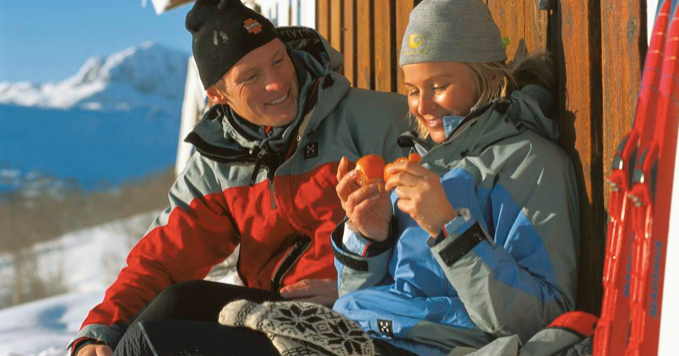
Yellow is the color of Easter in Norway and homes are decorated with Easter eggs and bunnies. Similarly to Finland, yellow daffodils and tulips are popular too!
What's on the menu? Chocolate and fresh oranges! Norwegians love chocolate during Easter!
Here are our picks for Easter traditions, recipes and decorations to celebrate Easter with a Nordic twist
1. Set the Table with Iittala and Marimekko Tableware
Food and table-settings play a significant part of Easter celebrations in Finland. Set a beautiful Easter table with the timeless, beautiful and high quality tableware from iconic Finnish design brands such as Iittala and Marimekko.
You will find our Marimekko and Iittala tableware collections here >

2. Tradition: Easter Eggs – of course!
The relationship between eggs and Easter is relatively the same in Denmark as the rest of the world. Trees and houses are decorated with colored eggs and the giving and hiding of chocolate eggs is very common. Colored boiled eggs are also found on the Easter lunch table in most Danish homes. In Southern Denmark, eggs are also specially prepared as “Solæg”, which translates as “sun egg.” The eggs are boiled with onions, turning the yolk a dark color. The eggs are then put into a salty mixture for a week, and then served with mustard and chili.
Easter egg throwing is also popular in Denmark, trying to see who can throw their hard-boiled egg the farthest. If you want to be more extravagant, you can visit Royal Copenhagen’s flagship store on Main Street (“Strøget.)” There they produce a new porcelain egg each year that can be filled with chocolate candies.
The eating of candy at Easter is not just for kids – a recent study says that the average Dane eats 17 lbs of candy per year. The second most in Europe!
Color your Easter eggs and bunnies with non-toxic child-friendly Watercolors by Lovi >
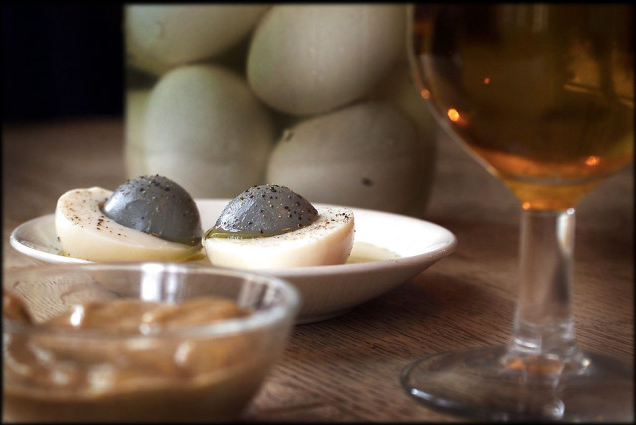
Solæg, a kind of hard-boiled egg, is enjoyed during Easter, particularly in South Jutland. Photo: Annett Bruhn/Ritzau Scanpix
3. Decorate with Aarikka Easter bunnies and chicks
Bring the Easter in with handmade wooden decorations. Decorate with minimalistic, fresh spring colors, get your Aarikka Easter decorations here >
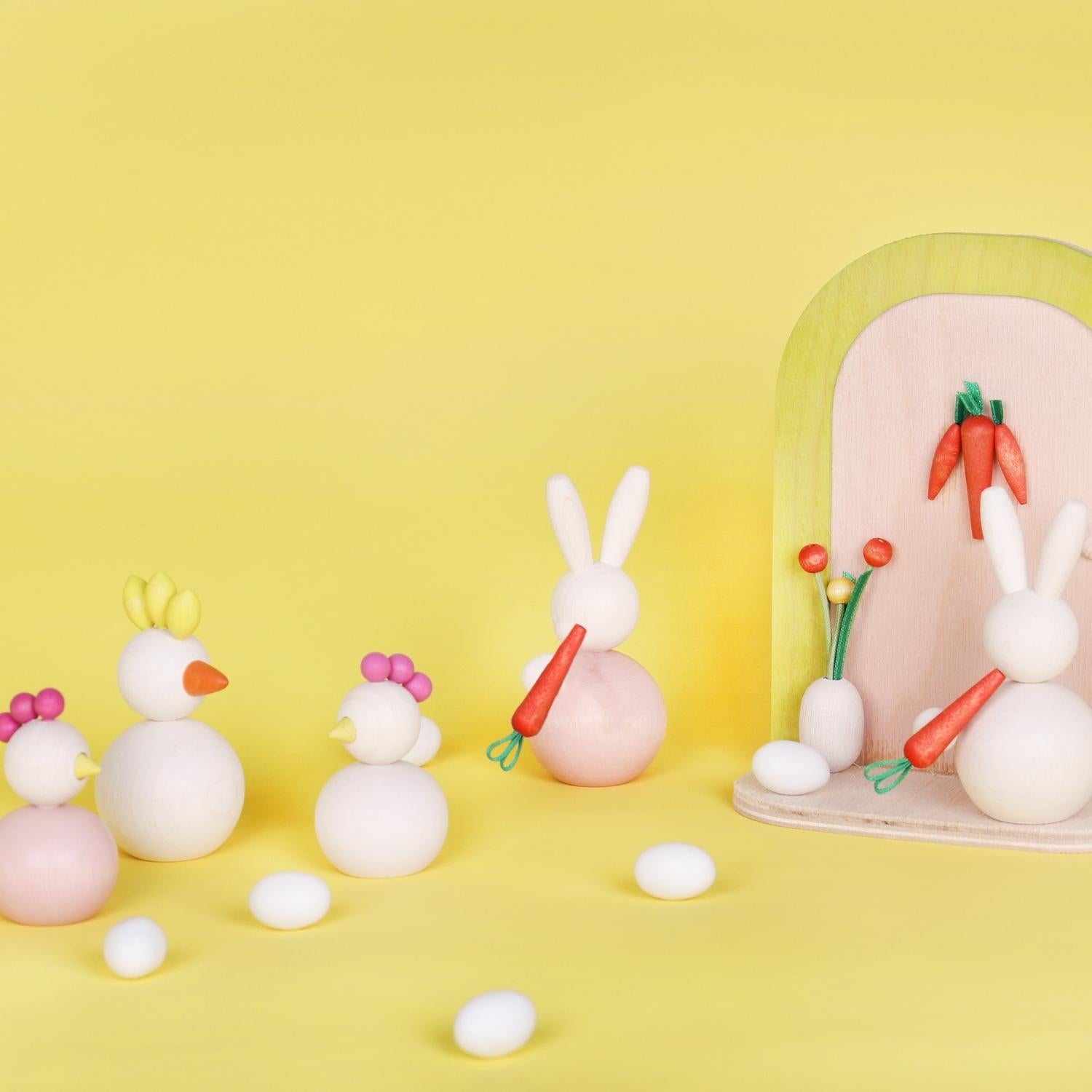
4. Swedish Easter lunch recipe
Cook your Swedish Easter lunch with the Tools Collection inspired by professional chefs and designed by Swedish designer Björn Dahlström.
Here's a video recipe for Gravlax with potato salad:
Serve your Gravlax and potato salad on our timeless Nordic tableware!
5. Tradition: Magic Grass
One of the Finnish Easter traditions for children is the planting of rye grass seeds in small shallow dishes. As the grass grows, small Easter decorations, such as small and bright yellow chicks and chocolate eggs are "hidden" in the grass for an Easter decoration display. Birch and willow twigs are also placed in vases as decorations and the appearing green shoots symbolize the springtime. Yellow daffodils and tulips decorate the homes bringing the spring inside.

Lovi Finland 3D designed DIY rooster
6. Bring the season in with flowers
Use the elegant shape of lake waves found in Alvar Aalto vases for festive flower bouquets or use the Marimekko vases for simple and minimalistic flower arrangements. Shop our Iittala and Marimekko vases here >

7. Easter baking from Norway
Given how many oranges and how much chocolate is consumed in Norway during Easter, we picked this sweet Whole Wheat Dark Chocolated and Candied Orange Peel Braided Swirl Bun recipe from North Wild Kitchen >
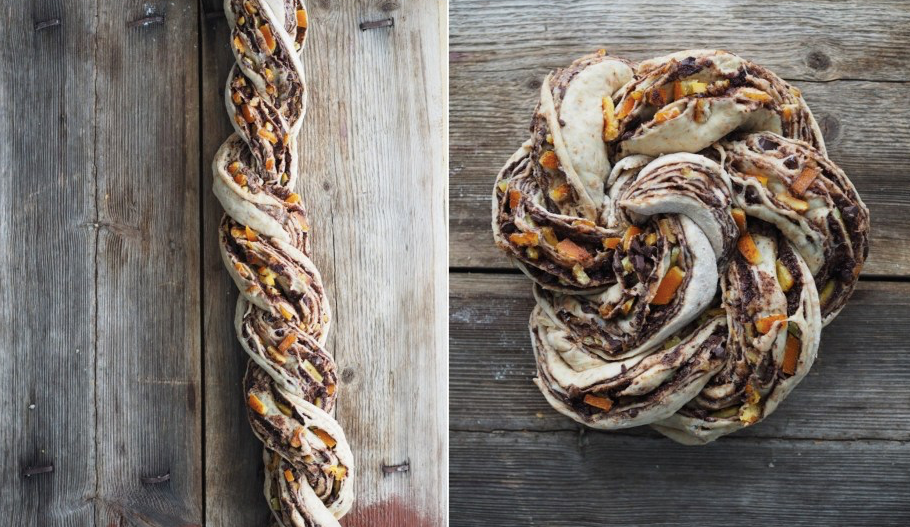
Easter recipe: "Grov-flettekrans med skjokolade og kandiserte appelsinskal". Photo: North Wild Kitchen
Serve your Norwegian Easter "høytider" (holiday) "Grov-flettekrans med skjokolade og kandiserte appelsinskal" on a beautiful Kastehelmi Collection (1964) serving plate!
8. Make Easter cooking fun with Kauniste tea towels!
The eco-friendly silkscreen printed (non-toxic inks) linen-cotton material keeps and washes well!
Get your kitchen towels here >

9. Tradition: Gækkebreve (Fool’s Letter)
One very unique Easter tradition in Denmark is “Gækkebreve.” “Gækkebreve.” Is a fine paper letter cut in unique shapes such has hearts or snowflakes with a rhyming poem and then signed with dots corresponding to the number of letters in their name. The children send this secretly to a friend. If the receiver guesses who sent the letter, then the sender must give him/her a chocolate Easter egg. If the receiver cannot guess who the sender is, then they must reward them with a chocolate egg. Usually the receivers are adults and, therefore, the tradition is that the receiver is “not able” to guess the sender and has to reward the child with extra chocolate.
Here's your guide to how to make a Gækkebreve:
10. Decorate your Easter table-setting with candles
Create Easter ambience and add finishing touches to your Easter table with timeless handmade Aarikka candleholders and Iittala tealight holders made in Finland.
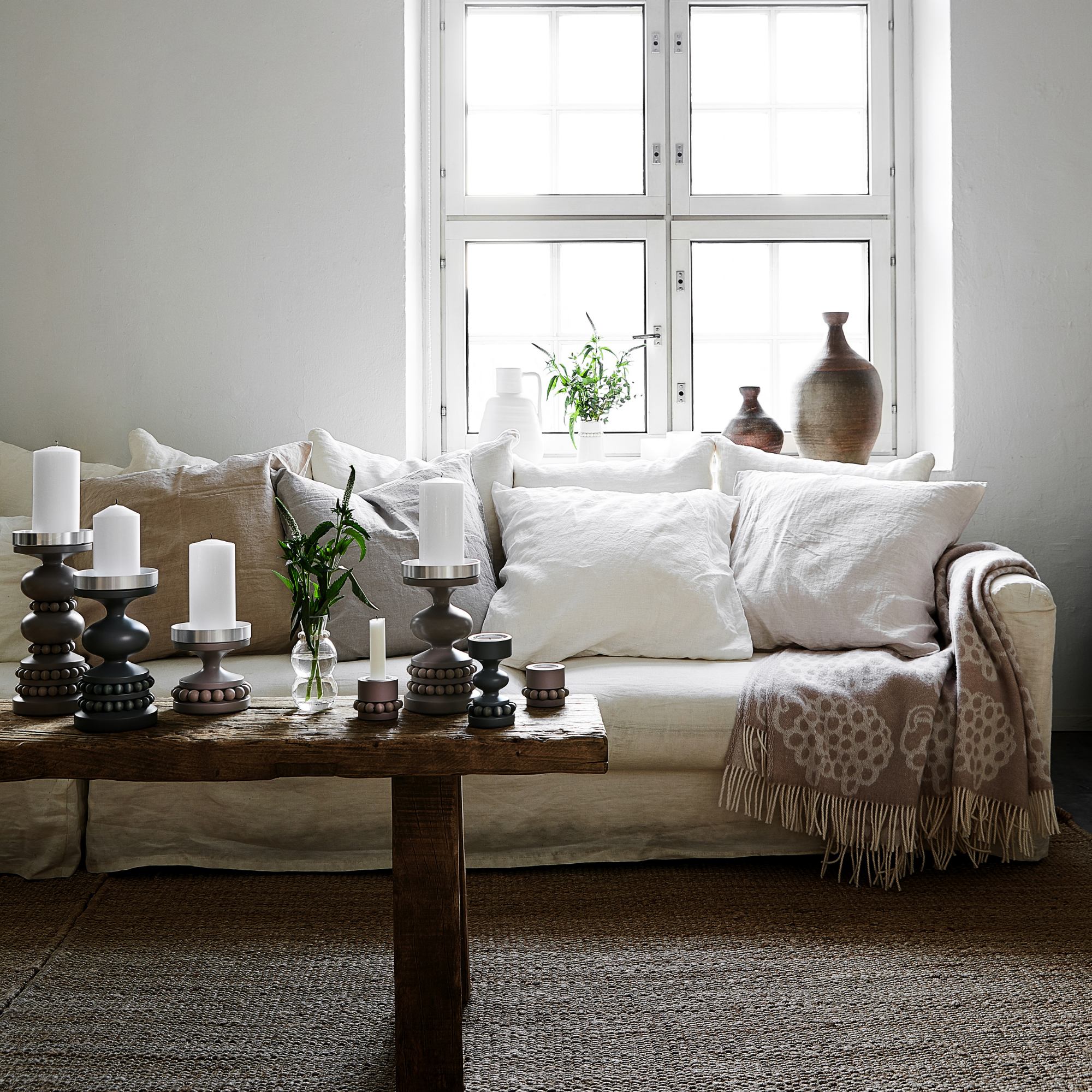
There is a Story Behind Every Design at NØRDIK! Tell us what your Easter traditions and design stories are?
Happy Easter, Hyvää Pääsiäistä, Gleðilegra Páska, God Påske, from NØRDIK!



Comments
1 Comments
-

Posted by Victoria Sloan | April 11, 2020
Leave a CommentI so enjoyed reading about The Easter Witch traditions in Finland and Sweden. I love the painted on freckles and sweet little head scarves. Charming, thank you for sharing this tradition!